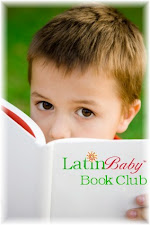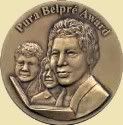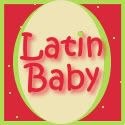 Back in 1991, at the end of my first year of teaching, I visited a tomato farm in East Tennessee. The 1000-acre farm belonged to my friend’s dad and I had been invited to spend some of my summer there. I’ll never forget that place. I woke up that summer. My eyes were opened to the hardships of migrant workers, and my heart to their children, who joined their parents in the work of gathering crops.
Back in 1991, at the end of my first year of teaching, I visited a tomato farm in East Tennessee. The 1000-acre farm belonged to my friend’s dad and I had been invited to spend some of my summer there. I’ll never forget that place. I woke up that summer. My eyes were opened to the hardships of migrant workers, and my heart to their children, who joined their parents in the work of gathering crops.I saw entire families, from abuelitos to pequeños , arriving to the farm in the early hours, ready to put in a long day’s work. The adults would head out to the hot fields to pick the ‘maters, and some of the women and small children stayed at the packing shed, sorting three types of plump, red fruit – the “bigs”, the “romas”, and the small “tommy-toes.” At lunch time, the workers and their kids sought shade under tractor trailers propped up on blocks, and ate their lunches of sandwiches, fresh tomatoes, and cold drinks. I remember the sweat-stained shirts of the men, their heavy jeans marked with the green and brown of the fields. I can still see the women, their hair pulled back in braids or ponytails, gently but swiftly selecting tomatoes from a fast-moving sorter, while some of the small children stood underfoot, playing with the small green baskets we buy cherry tomatoes in. I also remember my friend’s father giving out freezing cold ice-pops to the children, some of who had “worked” a couple of hours at stacking baskets, sweeping, and gathering fallen tomatoes.
At the end of the day, as the sun set, the families would bring in the last of the day’s truckloads, and head back home, to rows of trailers that had been set up down the road. Later, you could see and hear the families going about their daily lives – cooking, talking, doing laundry, running errands, playing, and enjoying music.
When I came upon the book Gathering the Sun - an Alphabet Book in Spanish and English, I was transported back to what I had seen and felt that summer. In this beautiful book, Alma Flor Ada writes simple poems in Spanish for every letter of the abecedario. Each poem is then translated to English on the same page. The poems practically sing about the lives of the farm workers. There is pride and glory in this honorable work, in this way of life. Most appealing to me in this book is the nurturing of family, traditions, and orgullo hispano. The illustrations by Simón Silva are rich and warm, celebrating the beauty of the land and the people who harvest it.
For the letters C and Ch, Ada writes about César Chavez, advocate and hero of migrant farmworkers. This book is dedicated to his memory. And one of my favorite letters in the book is the letter O:
Orgullo
Orgullosa de mi familia
orgullosa de mi lengua
orgullosa de mi cultura
orgullosa de mi raza
orgullosa de ser quien soy.
As a bilingual elementary school teacher, I take a book such as this, and invite my students to create their own alphabet books, with each letter dedicated to a detail of their own culture. Another option is to write an ABC poem, each line starting with the next letter in the alphabet. This has yielded the most beautiful writing in my 4th grade classroom.
Moms of smaller children can start up a scrap book or photo album, each page marked by a specific letter of the alphabet, including special family members, places visited, favorite foods, and special things about “back home.”


















3 comments:
Absolutely lovely! Muchisimas gracias, Cassy, for your first and most beautiful post. An excellent choice of books. You are certainly an asset to us!
~Monica
That is a beautiful book, and I loved your take on it as well. I also love the idea of creating an abecedario of special things from back home for my kids--I'm in that state of mind right now.
The poems do practically sing...and I was lucky enough to find the Suni Paz companion CD at our local library. Now I can't read the book without hearing her songs in my head. I think my kids enjoyed the book even more because of it!
Beautiful choice of books! Alma Flor Ada is a pride in our culture. I've enjoyed reading the review.
Post a Comment